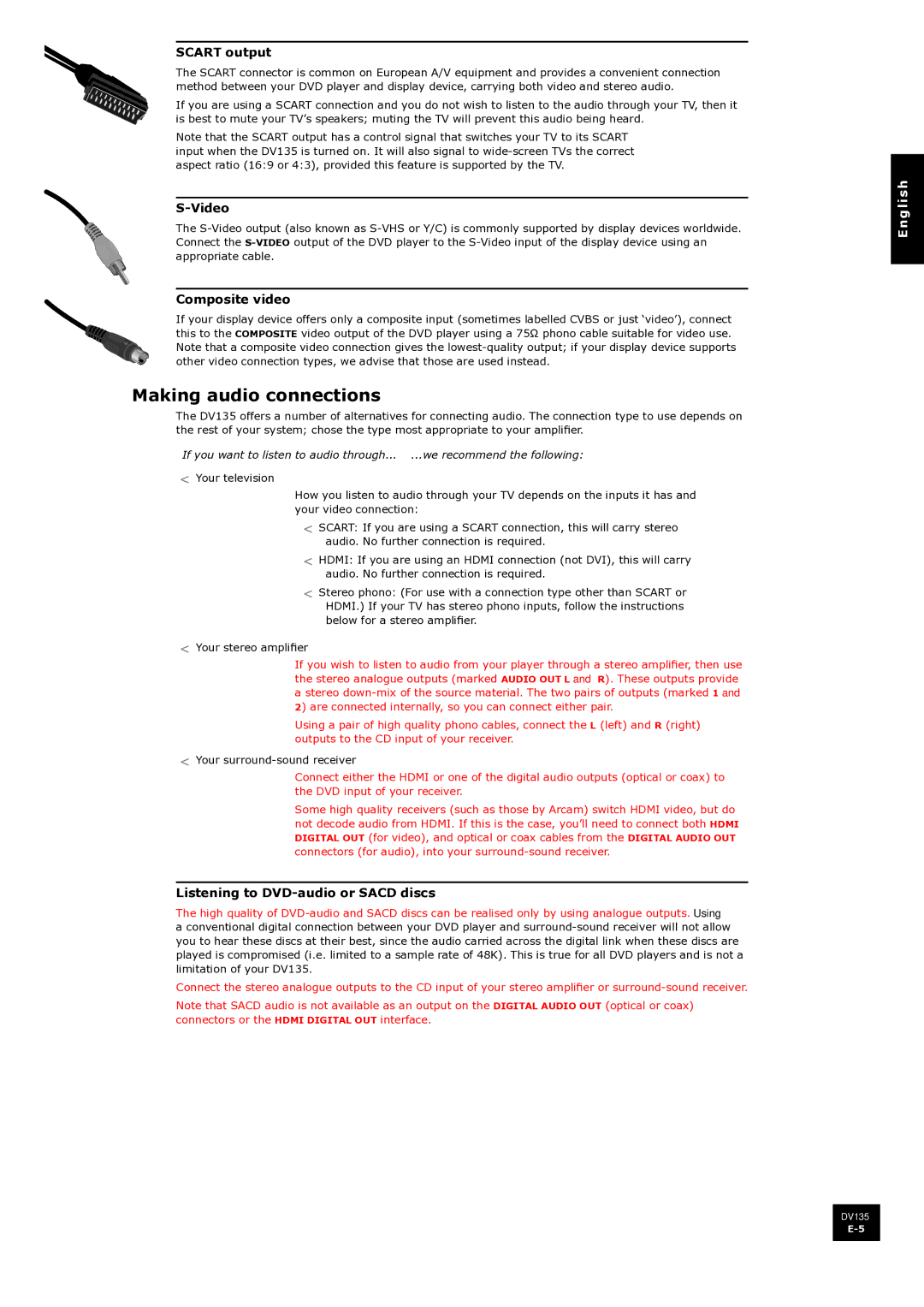
SCART output
The SCART connector is common on European A/V equipment and provides a convenient connection method between your DVD player and display device, carrying both video and stereo audio.
If you are using a SCART connection and you do not wish to listen to the audio through your TV, then it is best to mute your TV’s speakers; muting the TV will prevent this audio being heard.
Note that the SCART output has a control signal that switches your TV to its SCART input when the DV135 is turned on. It will also signal to
S-Video
The
Composite video
If your display device offers only a composite input (sometimes labelled CVBS or just ‘video’), connect this to the COMPOSITE video output of the DVD player using a 75Ω phono cable suitable for video use. Note that a composite video connection gives the
Making audio connections
The DV135 offers a number of alternatives for connecting audio. The connection type to use depends on the rest of your system; chose the type most appropriate to your amplifier.
If you want to listen to audio through... ...we recommend the following:
<Your television
How you listen to audio through your TV depends on the inputs it has and your video connection:
<SCART: If you are using a SCART connection, this will carry stereo audio. No further connection is required.
<HDMI: If you are using an HDMI connection (not DVI), this will carry audio. No further connection is required.
<Stereo phono: (For use with a connection type other than SCART or HDMI.) If your TV has stereo phono inputs, follow the instructions below for a stereo amplifier.
<Your stereo amplifier
If you wish to listen to audio from your player through a stereo amplifier, then use the stereo analogue outputs (marked AUDIO OUT L and R). These outputs provide a stereo
Using a pair of high quality phono cables, connect the L (left) and R (right) outputs to the CD input of your receiver.
<Your
Connect either the HDMI or one of the digital audio outputs (optical or coax) to the DVD input of your receiver.
Some high quality receivers (such as those by Arcam) switch HDMI video, but do not decode audio from HDMI. If this is the case, you’ll need to connect both HDMI digital out (for video), and optical or coax cables from the Digital audio out connectors (for audio), into your
Listening to DVD-audio or SACD discs
The high quality of
Connect the stereo analogue outputs to the CD input of your stereo amplifier or
Note that SACD audio is not available as an output on the Digital audio out (optical or coax) connectors or the HDMI digital out interface.
English
DV135
